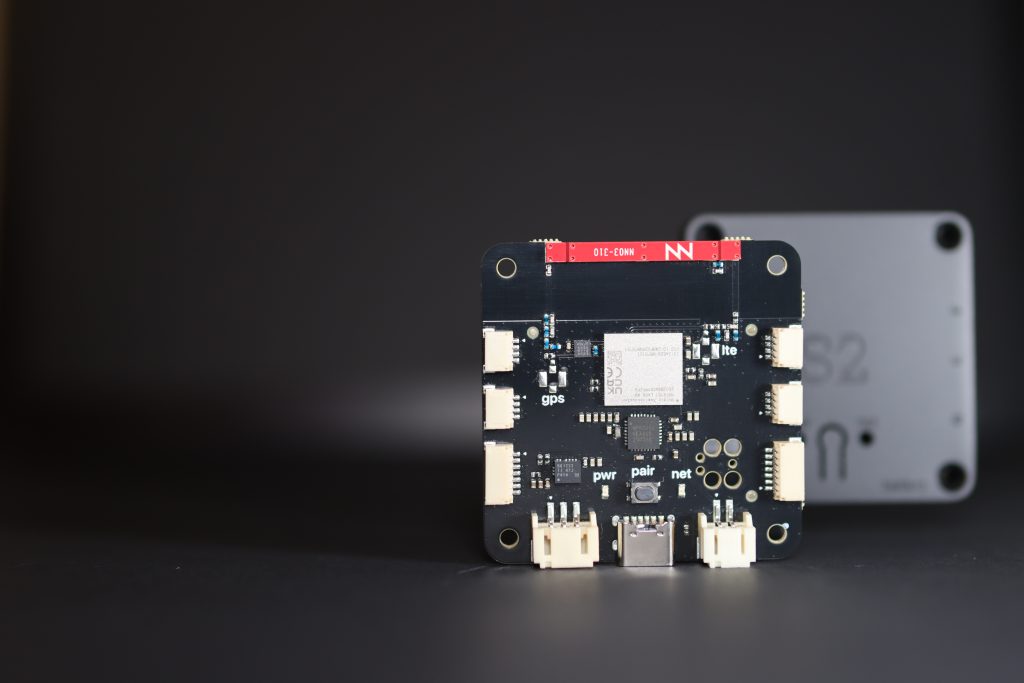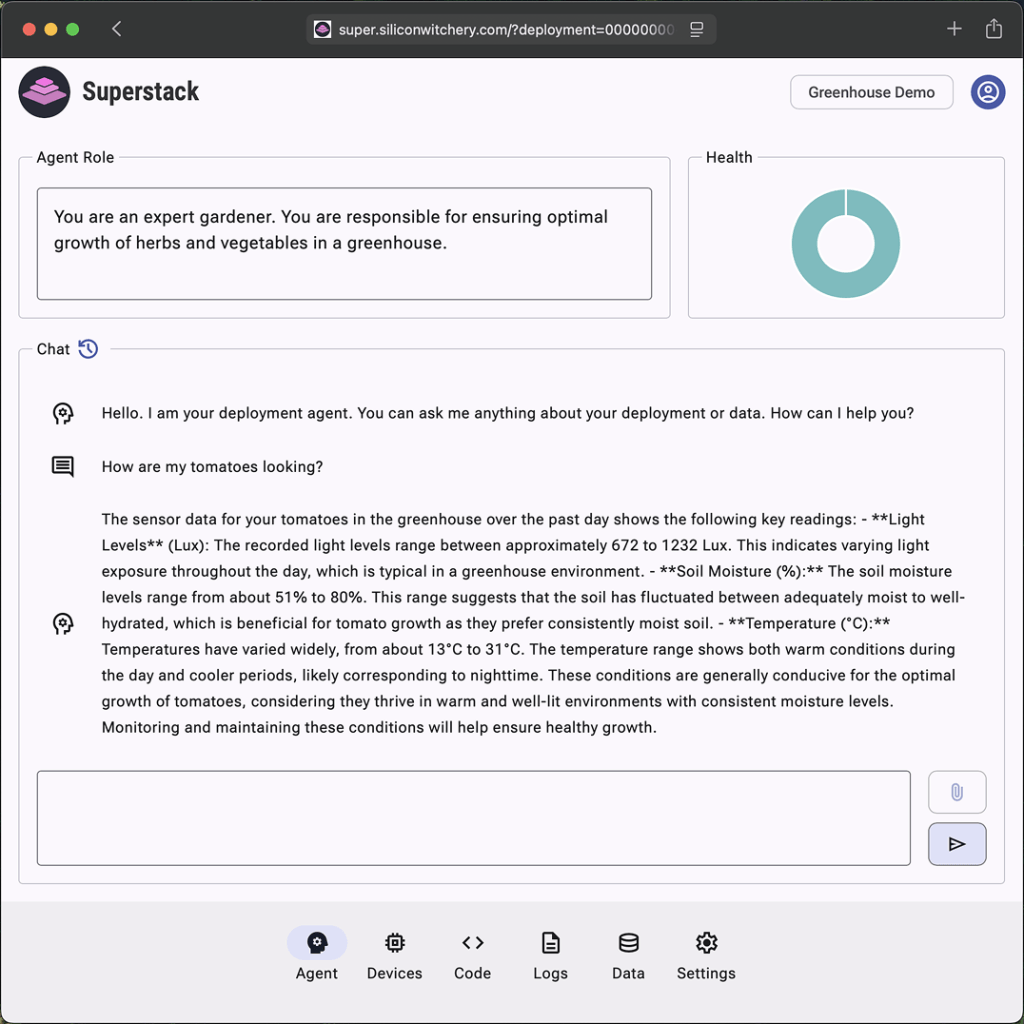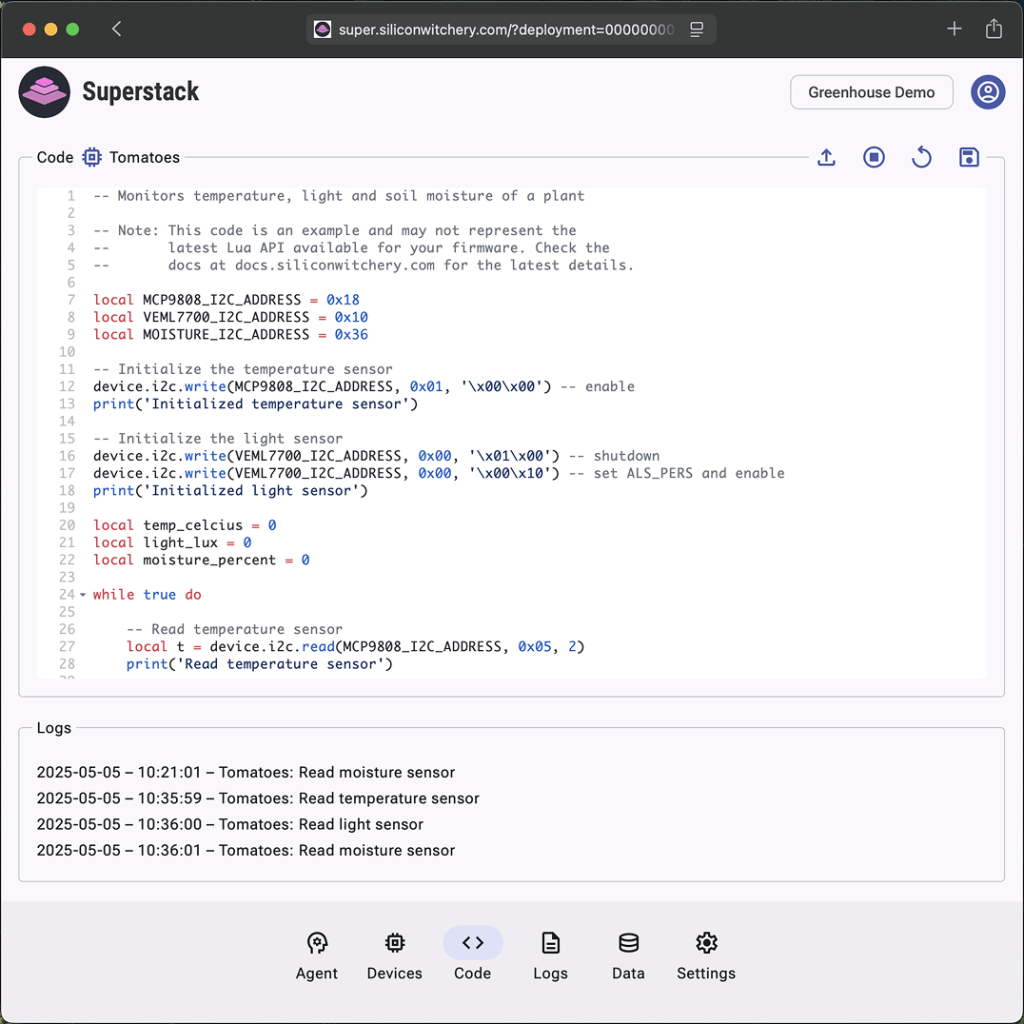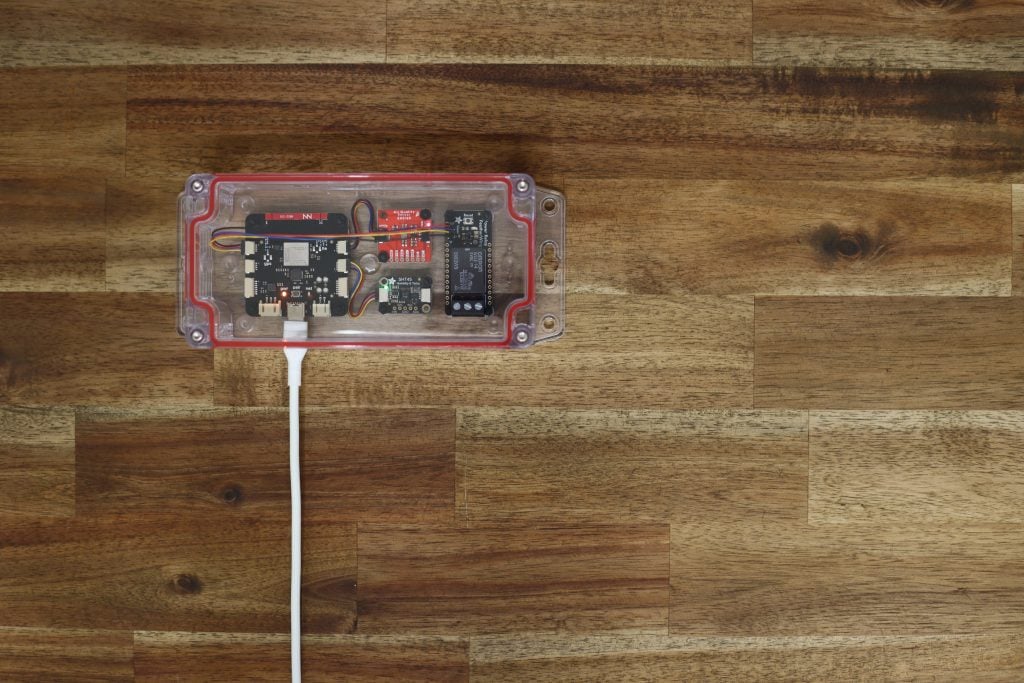Silicon Witchery Removes IoT Complexity with AI and Onomondo’s SoftSIM
Silicon Witchery uses Onomondo’s SoftSIM and LTE connectivity to cut IoT complexity, enabling simpler and remote device management, updates, and troubleshooting, and agentic AI capabilities.

"The SoftSIM integration with Onomondo was one of the fastest things. With Onomondo, the device feels more alert – you wake it up and it’s connected and ready to go in a couple of seconds. It's a working solution, which means it’s just a nice user experience"
Rajesh NakarjaAbout Silicon Witchery: Magically connecting the dots for every IoT use case
Silicon Witchery provides an end-to-end module that connects to all kinds of sensors and allows users to build and manage autonomous systems from anywhere. It is compatible off-the-shelf with different vendors and incorporates Onomondo’s LTE Cat M1-connectivity. The S2 module features a 5×5 cm board design for plug-and-play use and is fully over-the-air (OTA) programmable worldwide. Besides their broad capacity for use case, Silicon Witchery is also apt to tailor its hardware to specific applications for consumer products, industrial systems, smart cities, predictive maintenance, science and many more.
The witchery doesn’t end there. Superstack, the management platform that goes hand-in-hand with the modules, is the IoT command center that centralizes all data and programmable capabilities. Users can access logs, manage all visible data points, export data, or access it through an API.
True to its innovative drive, Silicon Witchery also provides agentic AI to enable users to realize the potential of the data. All incoming data can be processed with AI queries within its Superstack platform. From the device to command execution to real-world application, Silicon Witchery’s end-to-end solution performs all IoT tasks in one place – without interruptions and with extensive support to scale IoT.
The problem: Complexity born out of the dark side of IoT
Silicon Witchery was founded in 2019 by Rajesh Nakarja, an embedded systems expert, who, until that point, had been bringing IoT projects to life for enterprises, such as Siemens and Bosch. While the operational challenges were crystal clear, Raj found himself solving the same problem over and over again. Raj explains:

“There is always some kind of wireless connectivity, some kind of sensor, some kind of mobile app or cloud infrastructure – basically, a structure to get the data from one physical place to some digital place where someone can use it. These custom solutions usually require one engineering team and one to two years to build.”
After building several custom IoT solutions, Raj pinpointed two main issues. Firstly, a custom process is unnecessarily repetitive from an embedded systems perspective; secondly, the projects are complex and unpredictable: The firmware, expertly crafted and working perfectly in a lab, is released to the physical world and it suddenly doesn’t work. In that case, someone has to visit the device and climb a roof to troubleshoot. As Raj describes “you end up maintaining an IoT team that is like maintaining IoT infrastructure”.
This is the dark side of IoT that Raj encountered several times in his career: A company with a clear need to collect data from somewhere builds up a whole infrastructure –from hardware to firmware to SIM cards– just to use the data they need.
The solution: An easy-to-use IoT infrastructure with agentic AI doing its magic
But there is light. Raj sees the solution in IoT infrastructure that is ”remotely debuggable, remotely programmable”. So Silicon Witchery set out to build the module and system that remove the complexity and provide an out-of-the-box IoT infrastructure. At the other end of this are entities that need data from the world and can use it as easily as possible – no cables, no climbing, no bureaucracy.
While that solves the problem, Silicon Witchery goes beyond a mere solution and adds value in using the data: Agentic AI applied to the proprietary data, all while users keep their data. Superstack collects thousands of data points. Instead of the users processing it manually or requiring a custom algorithm to crunch it, they can form a query. AI writes the algorithm, sends it to Superstack, Superstack reads it for the user and translates the answer to natural language. Raj describes:
“With IoT, you can end up in a scenario where you have a wealth of data from different places but in a format best formulated for a computer – coded names, different periodicity, potential data gaps, etc. It’s a messy pool with millions of data points. No one’s manually going through all of this!”
But Raj poignantly continues, that’s what AI does best: Processes mountains of data points fast and categorizes them. And when it comes to data privacy concerns, Superstack’s agentic AI is set up in a way where your data stays with the user. What goes into the large language model is the shape of the data , i.e., the data is described as information in natural language, and AI generates algorithms to solve each query mathematically. So behind the scenes of the agent’s answer is actually code that SuperStack reads securely. As a result and benefit, the device data never leaves the Superstack universe.

The spell: What kind of connectivity enables a seamless IoT infrastructure?
In his previous projects, Raj had worked with short-range technologies – and that was enough for him to disqualify them for Silicon Witchery products. Raj explains that with short-range, there’s always a box in between. Moreover, the device can be optimized to the highest level pre-deployment and not work as expected once it’s provisioned. It boils down to this:
“I wanted to focus on the one thing the product needs to do: Connect to the internet. The only practical solution to this is cellular. I see that as the future of connectivity”.
To fulfill the vision of frictionless IoT infrastructure and true to simplicity, Silicon Witchery was after global connectivity that you turn on and just connects. With Raj’s experience, remote programming was never an issue; the blocker was in the cloud connectivity and security.
“I was trying to figure out what bands to support in which parts of the world, the mounting and how that would affect the reception of the device, how we can be flexible in terms of power. On top of it, you have the connectivity infrastructure: How to manage all of these devices, keep them connected, and log data in a reliable way, while keeping everything secure.”
Powered by Onomondo’s visibility, Silicon Witchery found answers to these questions. The Onomondo team was apt to guide and support Raj in fine-tuning the radio frequency bands the device should support for the best possible coverage. As Raj elaborates, in the early days of development, troubleshooting the device data packets that don’t reach the cloud is a challenge. As an engineer, you have to make several components (antenna, SIM, firmware, cloud to name a few) speak the same language – but until you do, it’s difficult to see where things go wrong.
With Onomondo’s access to network level-visibility tools, like Traffic Monitor and Signaling Logs, Silicon Witchery could see every packet of data traveling through Onomondo’s core network – what the device is sending, what the network is receiving, and where the chain was blocked or broken.
After the device was up and running with Onomondo, the engineers at Silicon Witchery got some troubleshooting resolution:
- They spotted and resolved a loop in the firmware, where some packets were re-sent over and over
- They could pinpoint the exact points of failed connection incidents,
- They realized that certain messages were too heavy for the hardware to handle under TCP
And the latter had a direct positive impact on security. After seeing the raw packets under the DTLS implementation, Silicon Witchery could fine-tune how encryption and compression interacted with the device memory and power. Raj explains:
“These capabilities helped us figure out the security. We were implementing DTLS with our device and that was a constraint on the hardware. We couldn’t really have a full Transmission Control Protocol before Onomondo – it would take too much data. So we developed our own protocol that both compresses the data and enhances security.”

The SoftSIM charm: The invisible optimizer of IoT
Then there’s the SIM aspect of it. In the quest to remove all complexity from IoT, Silicon Witchery was keen on removing all the added costs and device complexity that come with physical SIMs or eSIMs. Silicon Witchery was in search of the SoftSIM from the get-go for several reasons:
- The end user doesn’t have to worry about anything connectivity-related
- SoftSIM is a far more secure solution as there is no possibility of physical tampering
- There are no logistics involved with a SoftSIM
- There are no barriers to scaling with SoftSIMs
- And finally, any other kind of SIM was not a component Silicon Witchery wanted to have on their board.
During this scoping process, Nordic Semiconductor, the supplier of Silicon Witchery, suggested Onomondo to Raj, as the SoftSIM integration is compatible with Nordic Semiconductor’s nRF91 series. The solution found the problem and the rest was history: This clear vision paid off in business savings.
Without the SoftSIM, Silicon Witchery would lose their competitive pricing edge. Raj explains that the products would amount to a cost that would put them in the same ballpark as the competitors. With Onomondo’s SoftSIM, Silicon Witchery notes 10% savings on the bill-of-materials for the S2 device.
Moreover, even in a world without SoftSIM, Silicon Witchery wasn’t willing to compromise – they would just put in the work to integrate the firmware to run on the chip – a process which would double the programming cost without Onomondo’s ready-to-go SoftSIM solution.
As Raj notes “the SoftSIM integration with Onomondo was one of the fastest things”. And then, there’s the benefit for the end-user. As SoftSIM consumes significantly less energy, the device extends the battery life by 10-15% depending on the use case, Raj specifies.
Ultimately, Raj says, the device feels more “awake”, instantly responsive. Here’s a big opportunity for power savings, as the user can put the device to sleep, easily wake it up and it will connect without any delays or hiccups. That’s when Raj woke up the device live during the conversation and the light flashed immediately. With the connected device at hand, Raj says:
“With Onomondo, the device feels more alert – you wake it up and it’s connected and ready to go in a couple of seconds. It’s a working solution, which means it’s just a nice user experience; one of these things that the user has been trained to worry about but shouldn’t have to”.

Once upon a future: A world of IoT powered by Silicon Witchery and Onomondo
Silicon Witchery’s S1 and S2 modules together with Superstack can work for any use case and be adapted to any variable. The need for data transmission can be anything – from once a day to constant and real-time. On top of this, the data that goes into Superstack is what feeds the AI agent. As such, a robust connectivity infrastructure is critical. Onomondo’s platform is integrated into Superstack, enriching it with connectivity data points and functions simply via queries to the AI agent.
Raj paints a vision of Silicon Witchery’s simplicity with a smart city case they came across. In a town with small roads dating back to the middle ages, the municipality is facing a challenge with garbage collection. The garbage trucks, while smaller and surprising additions to the town’s charm, fill up before their route is finished. Silicon Witchery demoed an application of their module, with a solar-powered battery, a LiDAR distance sensor, and GPS capabilities that can be bolted on top of the bins. The trash volume goes into Superstack at any interval that fits the municipality. So, before the data collection, the municipality can prompt the AI agent to provide a descending list of the GPS coordinates that will outline the optimal route based on real-time conditions.
This charming use case nicely converges the primordial IoT vision with that of Silicon Witchery: A world where device and connectivity work seamlessly end-to-end and users can use the wealth of real world data to personalize automations and save precious resources. Raj closes:
“In a year, I hope Silicon Witchery pushes the forefront of AI automation. Because the highway is here – we’ve built it. Now let’s focus on how we can make better and better use of the data.”
Creating better connectivity
for every thing.


